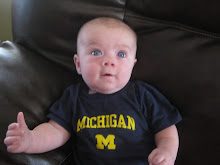Her latest RH Reality Check blog post entitled
“Outing the Pro-Teen Sex Agenda” claims that the most pro-choice states (states given an “A” by
National Abortion and Reproductive Rights Action League rankings) have “a lot more to celebrate” regarding teen pregnancy prevention and claims that prolife states (states given an “F” by NARAL) are where high-schoolers are:
-more sexually active
- more likely to have had sex before the age of 13
- more likely to have four or more sexual partners.
First off, the criteria of the comparison is rather silly to start with because it assumes, without any evidence, that just because a state is ranked poorly by NARAL because they have prolife laws, they are therefore “prone to tell kids that abstinence is the only proven contraception, and discourage use of actual contraception, then wag their finger at the less ‘morally superior’ states.”
For example, Alan Guttmacher Institute
ranks states on their “efforts to help women avoid unintended pregnancy” and South Carolina and Alabama (which NARAL gives “F’s” regarding abortion) are the 3rd and 4th highest ranked states by AGI with regards to contraception while some states (like New Jersey or Hawaii) ranked well by NARAL with regards to abortion do poorly on AGI’s contraception rankings.
In addition, statewide comparisons which assume one group of states is more prone to comply to one brand of sex education are especially poor considering most decisions regarding sex education are made at the local level.
Regardless, we’ll move on to see if Cristina is being accurate when she claims pro-choice states have more to celebrate with regards to teen pregnancy. When examining teen pregnancy, probably the basic item to look at is
the teen pregnancy rate. For some reason, Page doesn't note which states did better with this most basic of categories.
NARAL gives 19 states an “F.” The average teen pregnancy rate of these states is 74.89. Some states are very low (like North Dakota with a 42) while other states are high (like Texas with a 103).
NARAL gives 8 states either an “A” or “A+” and gives 7 states an “A-.” I’m not certain if Cristina included “A-“ states so the average teen pregnancy rate of the “A” states without the “A-“ states is 75 and 78.47 with the “A-“ states. Again, some states were low (like Vermont with a 44) while others were high (like “A-“ Nevada with a 113).
After realizing prolife states (by Page’s criteria) had a slightly lower teen pregnancy rate than pro-choice states, you probably are no longer wondering why Page doesn’t mention the most basic indicator of success with regards to teen pregnancy in her analysis.
Instead, the first criteria Page uses is the proportion of high school students who had sexual intercourse in the previous three months or “sexually active” for short. One problem which springs immediately to mind is that many states (including 5 of the 8 “A” states, 1 “A-“ state and 6 “F” states don’t have recorded statistics for this category. I would expect most honest people to at least note that of the groups they're comparing, 5 of the 8 (or 6 of 15 if "A-" states are counted) states in one group and 6 of 19 in another group don’t have statistics to be compared. Does it really make sense to claim the most pro-choice states have more to celebrate than the most prolife states based on a category where the majority of the most pro-choice don't record data? Not to me, but then again, I'm not desperate to prove the
pro-choice movement saved America.
The averages are 34.69% for the “F” states, 29.67% for the “A” only states and 31% for “A” and “A-“ states combined.
The second criteria Page notes pro-choice state success over prolife states is
sex before the age of 13.
Again there is the problem of many states (including 4 “A” states, 1 “A-“ state and 6 “F” states) not having recorded statistics for this category. I also wonder if these statistics include children who have been forcibly raped because you can’t really blame children being forcibly raped on a state’s prolife laws. Anyway, let’s go to the statistics.
For the 13 recorded prolife states, the average is 6.62%. For pro-choice states, the “A” without “A-“ average (4 states) is 5.25% and 5.6% with “A-“ states (total of 10 states).
The third criteria Page uses is the
proportion of high school students with four or more lifetime sexual partners. We again have the same problem with numerous states not recording this information including 4 “A” states, one “A-“ state and 7 “F” states.
The averages are 15.09% for the “F” states, 11.50% for the “A” states without “A-“ states and 12.2% with the “A-“ states.
What all these statistics would have been if pro-choice states like California, Oregon and Washington were included along with prolife states like Pennsylvania and Utah is anyone’s guess.
When all the dust is settled you see that Page’s attack on prolife states and congratulations of pro-choice states is based on fairly small differences between two groups of states where many of the states’ information isn’t even recorded based on the silly, unproven assumption that prolife states "are prone to tell kids that abstinence is the only proven contraception, and discourage use of actual contraception, then wag their finger at the less ‘morally superior’ states.”"
If this is what the pro-choice movement and Cristina Page celebrate, then I feel sorry for them.
What’s obvious once you actually
take a look at the teen pregnancy rates is the that teen pregnancy rates seem to be much more correlated with geography than with how prolife a state’s law may or may not be. The Northeast and Plains sections of our country typically have the lowest rates, the Midwest is in the middle, and the highest rates are in the South and Southwestern states.







